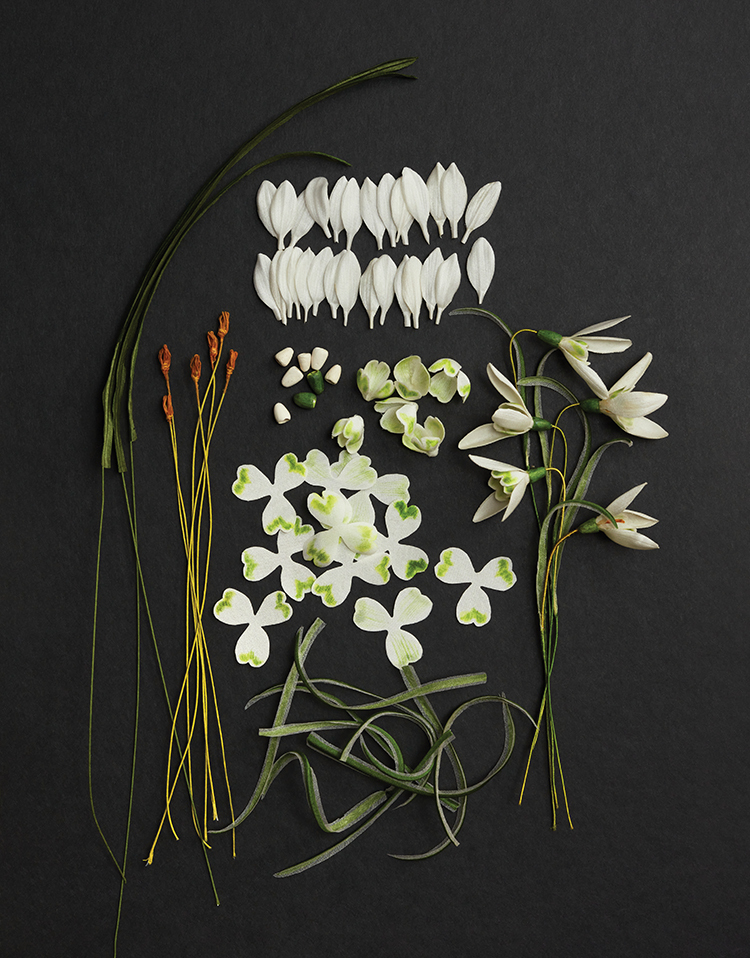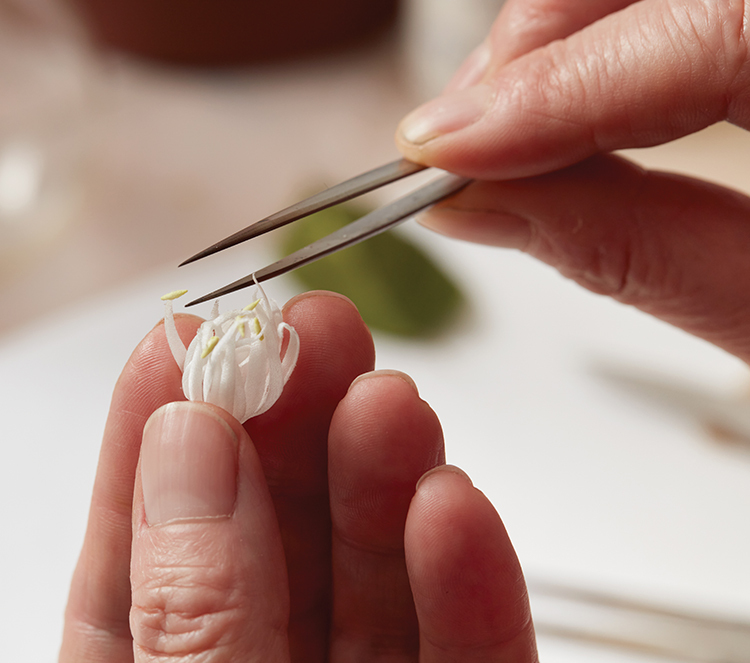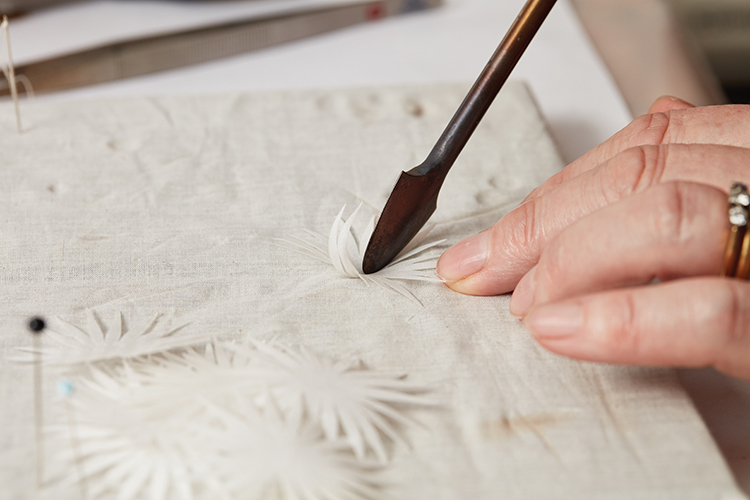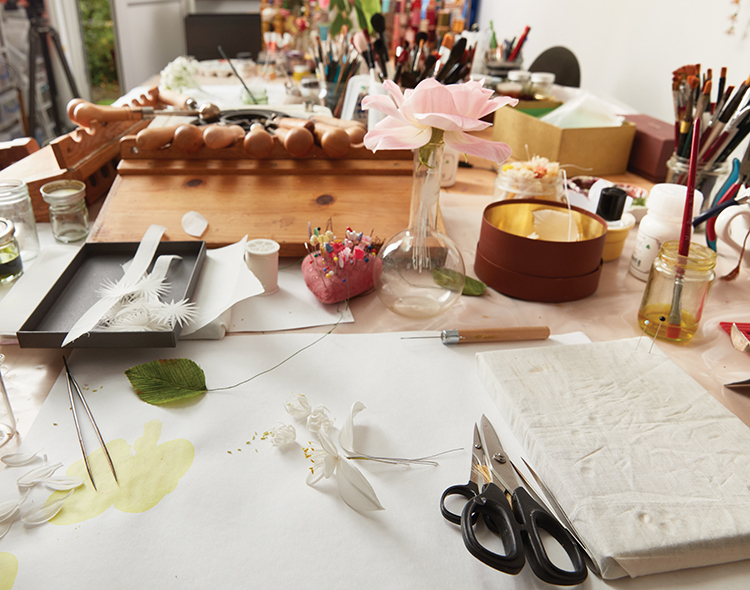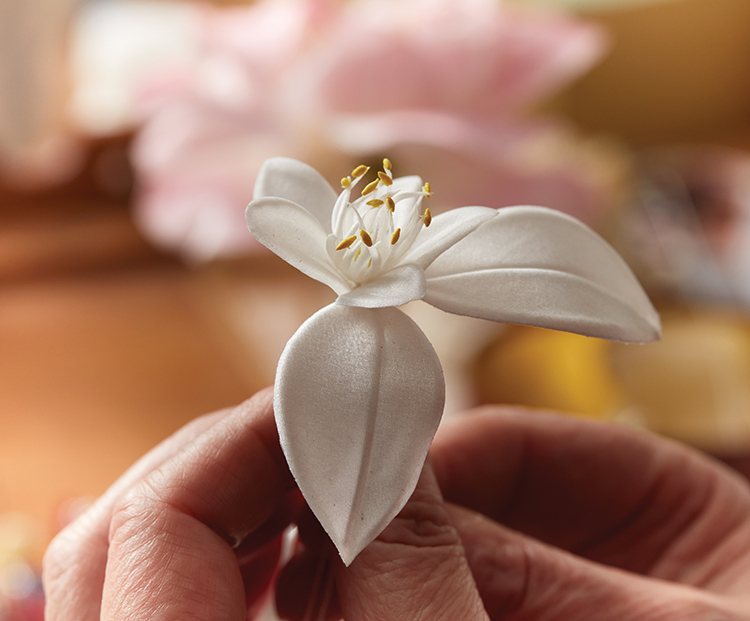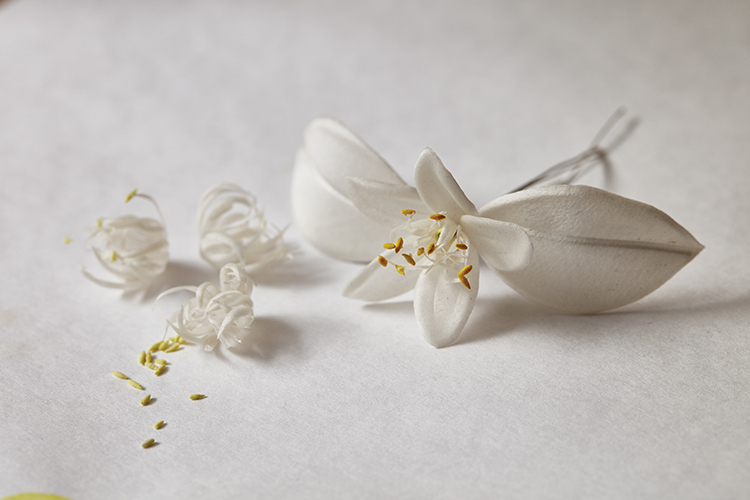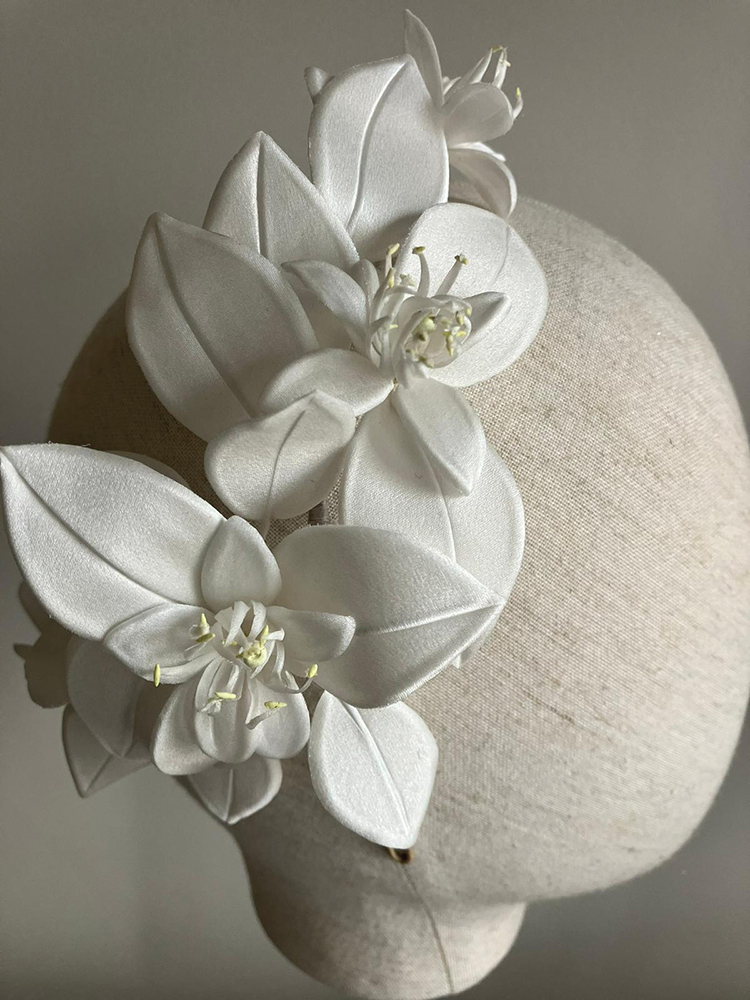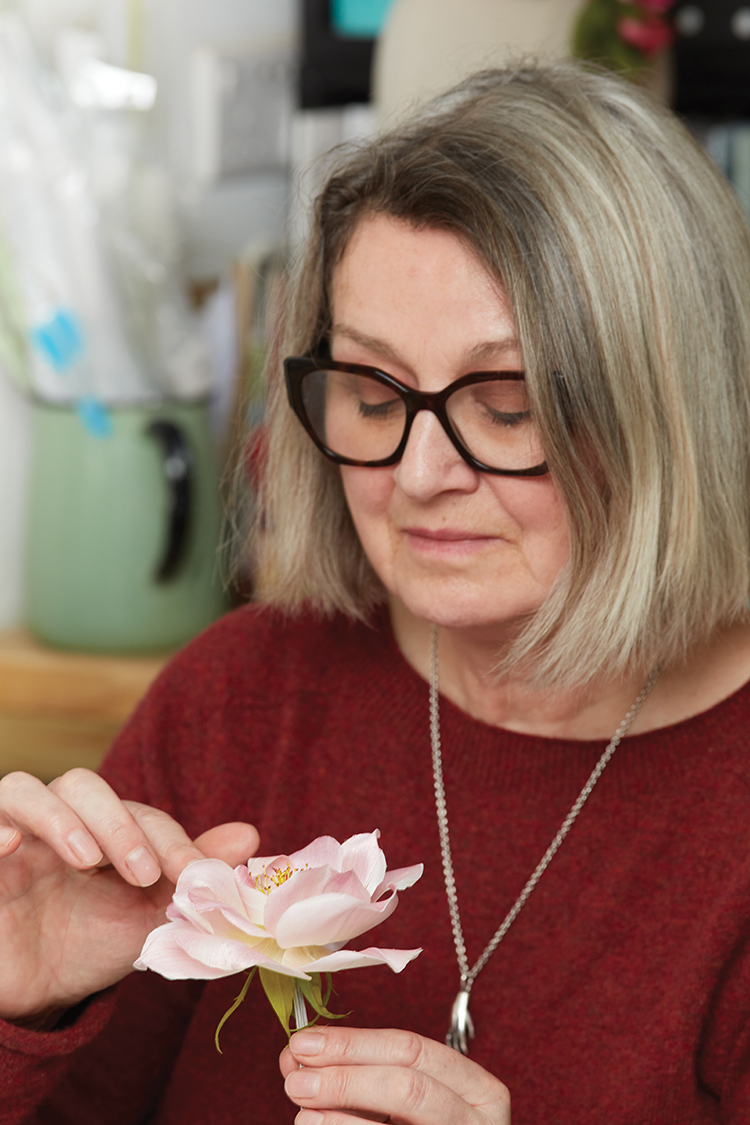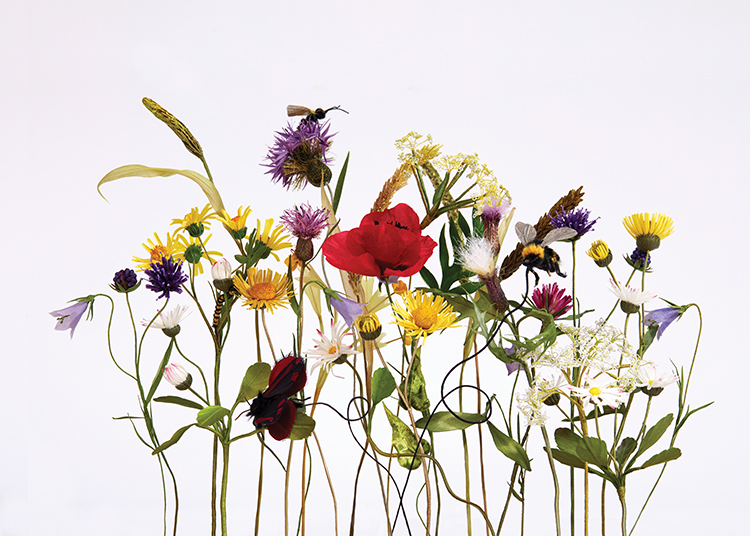
Sewing and making is like a second language to me. I started very young, learning from my grandmother, who made all her own clothes, knitted Fair Isle jumpers, and made incredible delicate lace. She was a significant influence on me and also my dad, who for a time brought up my brother and me by himself, instilling in us a sense of unconventional freethinking, which helped us become capable, inquisitive rule breakers.
I was lucky to have the opportunity to study textile design at school from the age of 14. I had amazing, inspirational teachers who helped shape my shy but determined beginnings and develop them into a lifetime love of textiles and making.
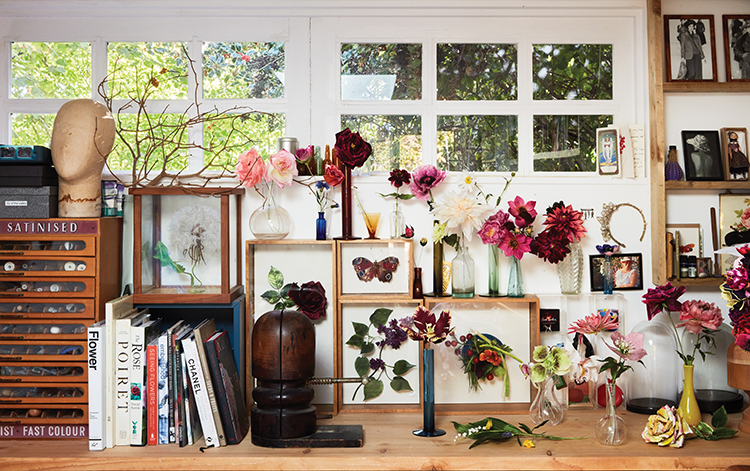
I grew up in a tiny woodman’s cottage in the middle of a wood near Bath, surrounded by nature. It was during these early years that my fascination for nature began. I remember glowworms, birds, deer, badgers and foxes in the garden. I would sit and draw for hours, noticing the incredible detail of flowers and insects, more interested in quiet introspection and studying butterflies and flowers, than par- tying with friends. I thought I must be a very dull person, but now it all makes sense. Being different from those around me was no bad thing. It’s a shame I didn’t realise that then.
I received a first-class degree in textiles from the Surrey Institute of Art and Design many years ago, in the early 1980s, and it’s from there that I built a solid foundation for my future career. I wasn’t sure how I was going to use these skills in the real world. I knew it wasn’t going to be an easy journey, but I was hungry for success and wanted to find a way by myself.
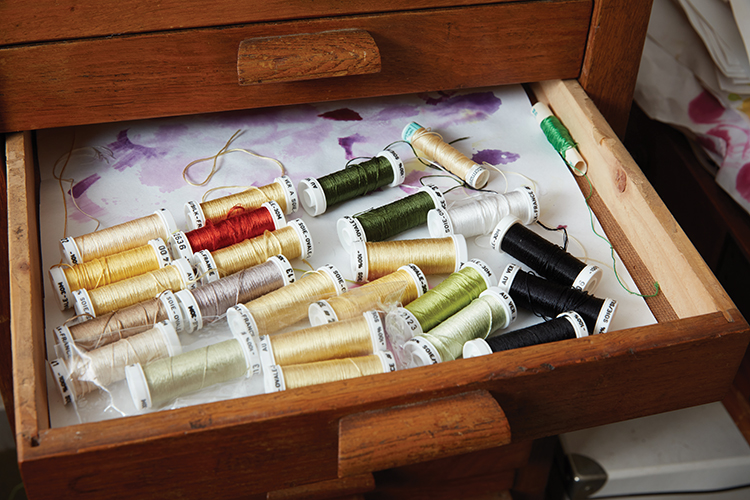
Determination and drive are crucial in life to make achievements possible, but having no money is a terrible and stressful hindrance. During this time, moving to London, I won a few textile and craft awards. I was awarded a Craft Council setting-up grant that enabled me to buy a George Wood dobby loom. But sadly, as much as I loved weaving, I just couldn’t find a way to make a living from it and eventually ended up selling it.
My mission was to find a way to sell a product that interested me. I have always loved hats and their sculptural qualities, and so I began a part-time course in millinery at the London College of Fashion.
Amidst a host of part-time jobs, living frugally and working from a tiny flat in Brixton, I somehow managed to get my first hat order from the Mulberry Company. This was a significant point in my career and, as everyone knows, it takes courage to be the first to order from a new business. I worked with Mulberry for five more years, designing and making two collections a year.
My dream at this point was to see my hats in Harrods. That was my aim, but I was initially rejected by Harrods and a few other big stores. Rejection is always disappointing, but it also strengthened my resolve to produce hats that would sell.
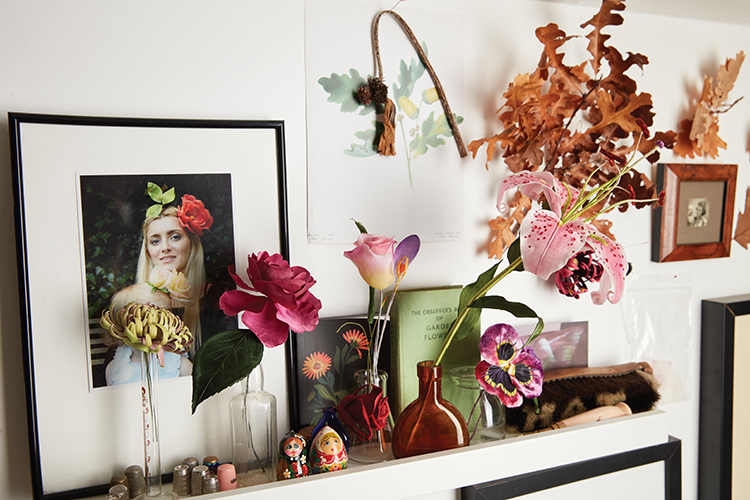
With no internet in the 80s, getting information was time-consuming and complex — from making appointments to finding suppliers and exporting. Although life was a hand-to-mouth existence, it was also exciting.
TV ads, films, orders and lots of interest came my way, but in retrospect, I was incredibly naive to think I could have a successful business without financial help. My advice to my younger self would perhaps be to work with an established milliner to begin with, to gain experience and not have the financial burden stifling my creativity.
Next came an order from Bloomingdale’s. And, after a conversation with my friend Bridget, who was a textile designer at a crossroads in her life and interested in making hats, we decided to join forces and created the hat label Bailey Tomlin.
We borrowed money from the bank and moved into a studio, which seemed like a big risk at the time, but luckily it paid off. Before long, we were selling to more than 30 shops, including Harrods, Liberty, Saks Fifth Avenue and Mitsukoshi. What dreams are made of …
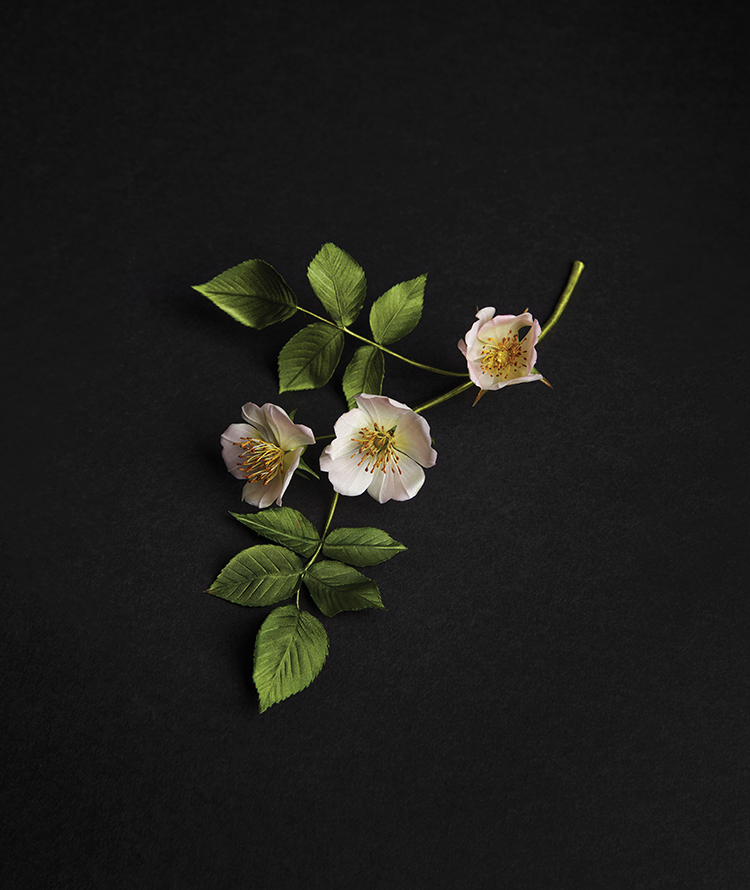
I wasn’t taught how to make flowers. The first flower I made was for Deborah Cavendish, Duchess of Devonshire. I was introduced to her by a friend, and she asked me if I could make her a Queen Mary’s toque with a pale-pink rose. I had no idea how I was going to do this and ended up contacting a well-known milliner for some advice. It was hard to find any information on making silk flowers, but I did discover a company that sold French flower-making tools, so I began experimenting with silk and stiffeners, and tools, slowly finding ways to colour and manipulate silk into a rose.
In 2006, I walked away from Bailey Tomlin with nothing, exhausted and burnt out.
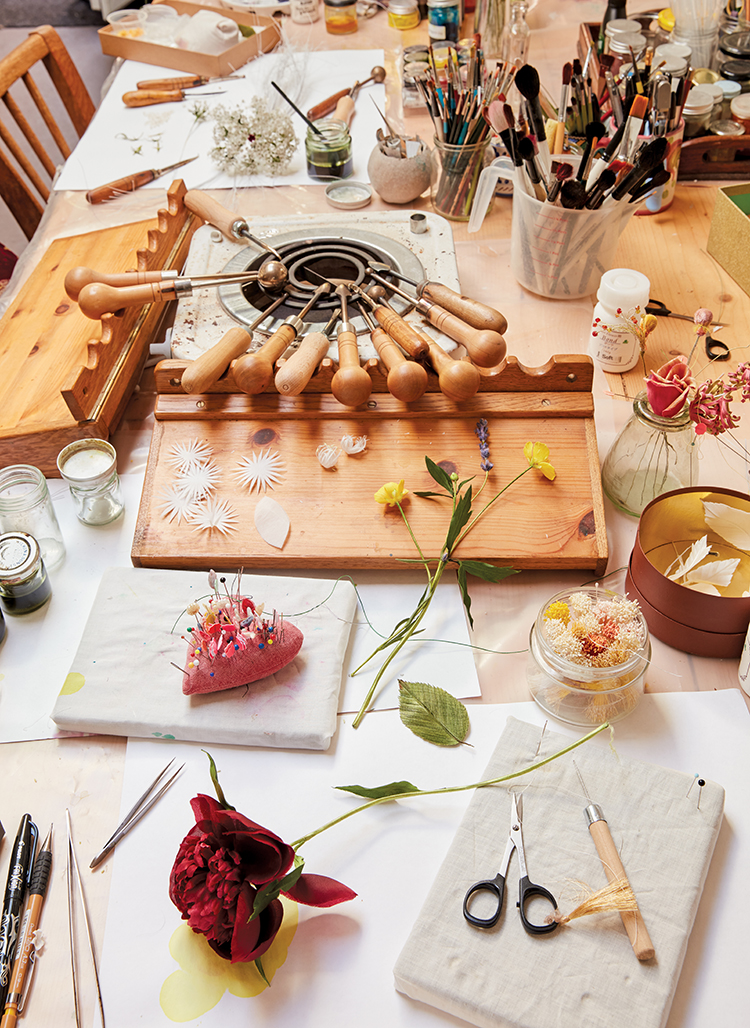
It wasn’t until I left my business and London that I began to look at nature more closely and started to observe, thinking a lot about pollination and biodiversity through drawings and studies of the flowers around me and the wild meadows near us.
I came away with not much more than my flower tools, and took time to recover from a full-on 20 years of hard work — starting slowly, experimenting and reinventing myself, away from the hectic world of fashion and wholesale, drawing on my experiences and knowledge to begin making more detailed representations of the natural world.
Starting again was challenging. It took a number of years to feel as though I was making progress. I think of it as my second flowering (no pun intended). Being surrounded by beautiful wildflowers and spending time nurturing a garden (growing flowers I loved became part of my recovery and my inspiration), I began to find a way of making flowers that reflected the detail and depth of colour, movement and transparency. Through experimenting and studying them closely, I found ways to interpret their personalities.
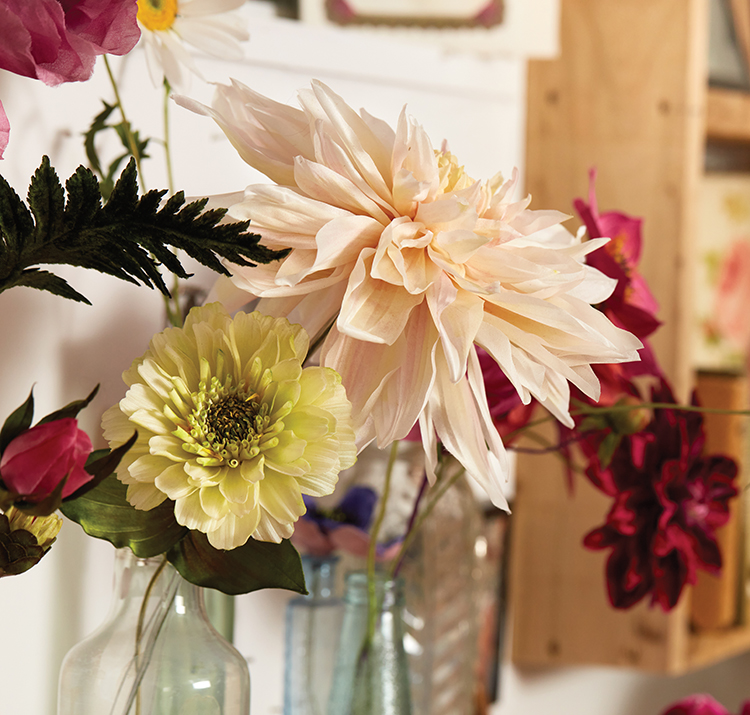
I love illustrated botanical plates and beautiful flower books, and take inspiration from couture fashion designers such as Christian Dior, Elsa Schiaparelli and Gabrielle Chanel. Attention to detail and exquisite craftsmanship are qualities I am constantly drawn to.
I now work to commission and relish every new challenge that comes my way. I have been working with artist Yinka Shonibare, making endangered plants and flowers, new growth on a charred tree, and other interesting, difficult and rewarding work for his sculptures that are related to climate change.
I recently made orange blossoms, crocus and rose petals for a perfume installation in Paris and I am currently collaborating with Jane Taylor, a renowned royal milliner. The orange blossoms in the project will be part of a beautiful bridal piece for her spring/summer 2024 collection.
When I approach a new project, I make many drawings and work out proportions and colours in my sketchbook. I love to problem solve — it’s my favourite aspect of my work process. I then decide the type of silk that is most sympathetic to the particular flower. I mostly begin with undyed silk, but I also use antique silks. I work out how much stiffener to use, the gauge of wire, how to make the centre of the flowers, and which tools to use.
I make these orange blossoms with stiffened silk satin that I bond with stiffened silk habotai, and then shape them with a heated arrow tool. I make the tiny yellow stamens by hand from modelling clay. The leaves are made from two layers of stiffened satin with a wire embedded between the layers. The centre of the flower is made in one piece with each frond shaped with a heated arrow-shaped tool to curl it inwards and then I shape the centre with a tiny ball shape that draws all the fronds towards the middle.
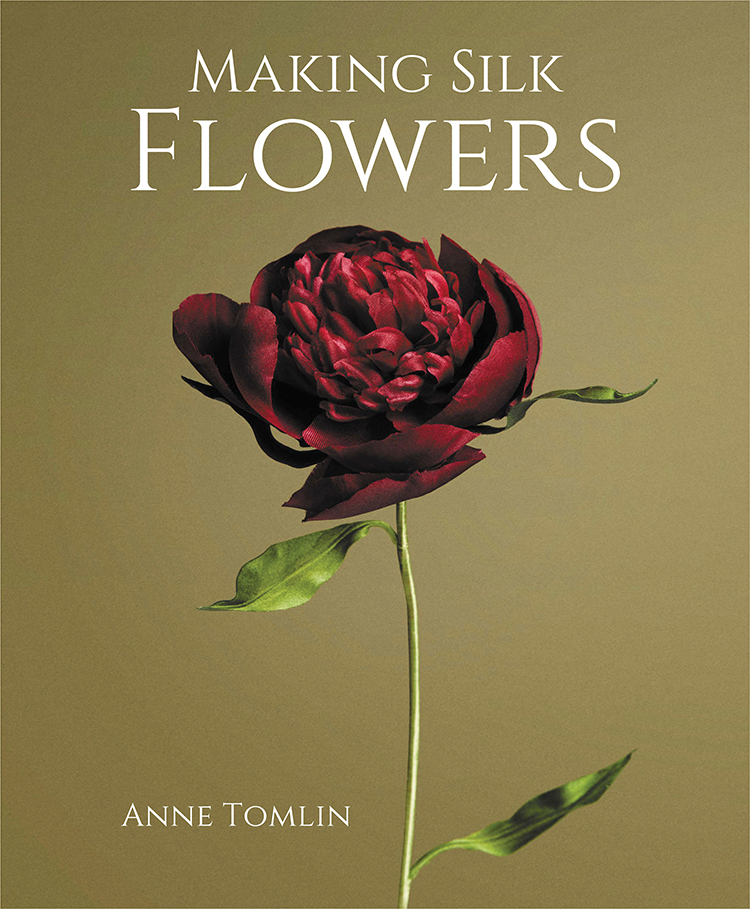
The past three years have been taken up with writing and making the flowers for my book Making Silk Flowers.
In the book, I explain my unconventional ways of making, showing a culmination of years of experimenting and combining different schools of thoughts — from Japanese Somebana to French flower making. There’s information on using dyes, tools and fabrics and individual tutorials for each flower, with templates.
I hope it to be an inspiring book that encourages observation of nature and discovering how you might interpret the personality of flowers through drawing and making, with curiosity and wonder. The book is not available to buy in the U.S. until July 1, but is available for pre-order on Amazon.
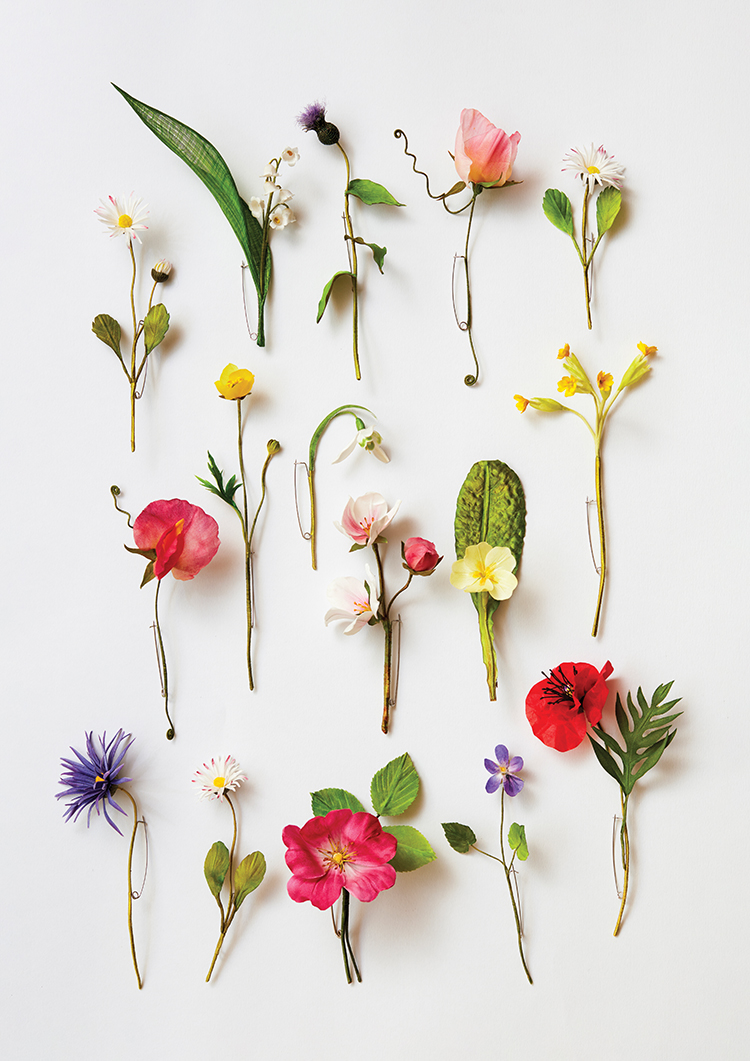
It was an insightful and challenging experience that made me realise not only how far I had come but also how much I care for our struggling planet. I have transformed my garden into a wildlife paradise using permaculture methods. In this small space I have 20 fruiting trees that provide cover for birds and blossom for bees.
All the plants I have chosen are excellent for nature and the soil, creating an abundance of pollen and nectar for insects and bees, making sure there is food for us and for our wild friends with no use of chemicals. I have seen many more worms and insects since taking away the lawn and replacing it with a forest garden.
This year, I am taking a course in natural dyeing with plans to incorporate their beautiful colours in my work, continuing to explore different ways of making, finding new ways to make even more beautiful flowers, butterflies and insects, with plans to have an exhibition on new botanical work.

Sewing and making is like a second language to me. I started very young, learning from my grandmother, who made all her own clothes, knitted Fair Isle jumpers, and made incredible delicate lace. She was a significant influence on me and also my dad, who for a time brought up my brother and me by himself, instilling in us a sense of unconventional freethinking, which helped us become capable, inquisitive rule breakers.
I was lucky to have the opportunity to study textile design at school from the age of 14. I had amazing, inspirational teachers who helped shape my shy but determined beginnings and develop them into a lifetime love of textiles and making.

I grew up in a tiny woodman’s cottage in the middle of a wood near Bath, surrounded by nature. It was during these early years that my fascination for nature began. I remember glowworms, birds, deer, badgers and foxes in the garden. I would sit and draw for hours, noticing the incredible detail of flowers and insects, more interested in quiet introspection and studying butterflies and flowers, than par- tying with friends. I thought I must be a very dull person, but now it all makes sense. Being different from those around me was no bad thing. It’s a shame I didn’t realise that then.
I received a first-class degree in textiles from the Surrey Institute of Art and Design many years ago, in the early 1980s, and it’s from there that I built a solid foundation for my future career. I wasn’t sure how I was going to use these skills in the real world. I knew it wasn’t going to be an easy journey, but I was hungry for success and wanted to find a way by myself.

Determination and drive are crucial in life to make achievements possible, but having no money is a terrible and stressful hindrance. During this time, moving to London, I won a few textile and craft awards. I was awarded a Craft Council setting-up grant that enabled me to buy a George Wood dobby loom. But sadly, as much as I loved weaving, I just couldn’t find a way to make a living from it and eventually ended up selling it.
My mission was to find a way to sell a product that interested me. I have always loved hats and their sculptural qualities, and so I began a part-time course in millinery at the London College of Fashion.
Amidst a host of part-time jobs, living frugally and working from a tiny flat in Brixton, I somehow managed to get my first hat order from the Mulberry Company. This was a significant point in my career and, as everyone knows, it takes courage to be the first to order from a new business. I worked with Mulberry for five more years, designing and making two collections a year.
My dream at this point was to see my hats in Harrods. That was my aim, but I was initially rejected by Harrods and a few other big stores. Rejection is always disappointing, but it also strengthened my resolve to produce hats that would sell.

With no internet in the 80s, getting information was time-consuming and complex — from making appointments to finding suppliers and exporting. Although life was a hand-to-mouth existence, it was also exciting.
TV ads, films, orders and lots of interest came my way, but in retrospect, I was incredibly naive to think I could have a successful business without financial help. My advice to my younger self would perhaps be to work with an established milliner to begin with, to gain experience and not have the financial burden stifling my creativity.
Next came an order from Bloomingdale’s. And, after a conversation with my friend Bridget, who was a textile designer at a crossroads in her life and interested in making hats, we decided to join forces and created the hat label Bailey Tomlin.
We borrowed money from the bank and moved into a studio, which seemed like a big risk at the time, but luckily it paid off. Before long, we were selling to more than 30 shops, including Harrods, Liberty, Saks Fifth Avenue and Mitsukoshi. What dreams are made of …

I wasn’t taught how to make flowers. The first flower I made was for Deborah Cavendish, Duchess of Devonshire. I was introduced to her by a friend, and she asked me if I could make her a Queen Mary’s toque with a pale-pink rose. I had no idea how I was going to do this and ended up contacting a well-known milliner for some advice. It was hard to find any information on making silk flowers, but I did discover a company that sold French flower-making tools, so I began experimenting with silk and stiffeners, and tools, slowly finding ways to colour and manipulate silk into a rose.
In 2006, I walked away from Bailey Tomlin with nothing, exhausted and burnt out.

It wasn’t until I left my business and London that I began to look at nature more closely and started to observe, thinking a lot about pollination and biodiversity through drawings and studies of the flowers around me and the wild meadows near us.
I came away with not much more than my flower tools, and took time to recover from a full-on 20 years of hard work — starting slowly, experimenting and reinventing myself, away from the hectic world of fashion and wholesale, drawing on my experiences and knowledge to begin making more detailed representations of the natural world.
Starting again was challenging. It took a number of years to feel as though I was making progress. I think of it as my second flowering (no pun intended). Being surrounded by beautiful wildflowers and spending time nurturing a garden (growing flowers I loved became part of my recovery and my inspiration), I began to find a way of making flowers that reflected the detail and depth of colour, movement and transparency. Through experimenting and studying them closely, I found ways to interpret their personalities.

I love illustrated botanical plates and beautiful flower books, and take inspiration from couture fashion designers such as Christian Dior, Elsa Schiaparelli and Gabrielle Chanel. Attention to detail and exquisite craftsmanship are qualities I am constantly drawn to.
I now work to commission and relish every new challenge that comes my way. I have been working with artist Yinka Shonibare, making endangered plants and flowers, new growth on a charred tree, and other interesting, difficult and rewarding work for his sculptures that are related to climate change.
I recently made orange blossoms, crocus and rose petals for a perfume installation in Paris and I am currently collaborating with Jane Taylor, a renowned royal milliner. The orange blossoms in the project will be part of a beautiful bridal piece for her spring/summer 2024 collection.
When I approach a new project, I make many drawings and work out proportions and colours in my sketchbook. I love to problem solve — it’s my favourite aspect of my work process. I then decide the type of silk that is most sympathetic to the particular flower. I mostly begin with undyed silk, but I also use antique silks. I work out how much stiffener to use, the gauge of wire, how to make the centre of the flowers, and which tools to use.
I make these orange blossoms with stiffened silk satin that I bond with stiffened silk habotai, and then shape them with a heated arrow tool. I make the tiny yellow stamens by hand from modelling clay. The leaves are made from two layers of stiffened satin with a wire embedded between the layers. The centre of the flower is made in one piece with each frond shaped with a heated arrow-shaped tool to curl it inwards and then I shape the centre with a tiny ball shape that draws all the fronds towards the middle.

The past three years have been taken up with writing and making the flowers for my book Making Silk Flowers.
In the book, I explain my unconventional ways of making, showing a culmination of years of experimenting and combining different schools of thoughts — from Japanese Somebana to French flower making. There’s information on using dyes, tools and fabrics and individual tutorials for each flower, with templates.
I hope it to be an inspiring book that encourages observation of nature and discovering how you might interpret the personality of flowers through drawing and making, with curiosity and wonder. The book is not available to buy in the U.S. until July 1, but is available for pre-order on Amazon.

It was an insightful and challenging experience that made me realise not only how far I had come but also how much I care for our struggling planet. I have transformed my garden into a wildlife paradise using permaculture methods. In this small space I have 20 fruiting trees that provide cover for birds and blossom for bees.
All the plants I have chosen are excellent for nature and the soil, creating an abundance of pollen and nectar for insects and bees, making sure there is food for us and for our wild friends with no use of chemicals. I have seen many more worms and insects since taking away the lawn and replacing it with a forest garden.
This year, I am taking a course in natural dyeing with plans to incorporate their beautiful colours in my work, continuing to explore different ways of making, finding new ways to make even more beautiful flowers, butterflies and insects, with plans to have an exhibition on new botanical work.










